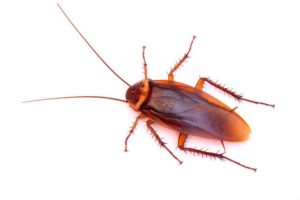4.1 MAINTAINING A SECURE LAB ENVIRONMENT
The NIH Guidelines, the BMBL, and institutional policy require recombinant and potentially infectious agents to be secured when not in use. Beyond this requirement, maintaining a secure lab protects the environment, and protects both work related materials and private property. Entry to any laboratory is granted at the sole discretion of the laboratory principal investigator, but the following standards should be followed:
- Ensure entry doors are locked at the end of the shift. Note that labs under the purview of the Radiation Safety program require the doors be locked anytime a lab is unoccupied.
- Individuals who don not routinely work in the lab are encouraged to wear identification or make their identity known upon entry.
- Lab staff should question any unrecognized individual who enters the lab. Don’t provide access codes or keys to individuals who are not authorized to be in the lab.
- Contractors, service personnel, and visitors should be made aware of risks and entry requirements prior to beginning work in the lab.
- Report any security breaches to the next higher level of authority (supervisor, department head) and UT Police as soon as possible.
- Children under the age of 18 are prohibited from entering BSL-2 (or higher) laboratories at the University unless the risk(s) have been evaluated by the Biosafety Office and/or IBC.
- Be aware of your surroundings and do not allow strangers to wander through the lab. If you notice someone who seems out of place, make other personnel aware and offer to direct them to their desired person or location. This does not mean for you to put yourself at risk. If you are uncomfortable with the situation or are alone, please do not hesitate to seek help from others in the lab or surrounding labs, or the UT Police Department.
- Lock the laboratory when not in use. Unlocked and empty facilities are easy targets for theft. Secure the lab if you will be out for more than 2-3 minutes.
The Biosafety Officer is the primary contact for required security measures under this section and can be contacted at 865-974-1938. Security measures associated with biohazards include:
- Infectious agents categorized as Risk Group 2 (or higher) must be secured. Security measures include lockable storage devices, locked laboratory doors (when personnel not present), card/code-restricted areas/zones, or combination thereof. Stringency may vary based on the agents, regulatory requirements, or other special considerations identified by safety and security risk assessments.
- Storage devices located in unlocked/unrestricted common areas shall be locked and appropriately labeled with biohazard signage and contact information.
- Biological materials under regulatory permit (e.g., USDA, CDC, etc.) must be secured according to the specified permit provisions.
- Department of Health and Human Services (DHHS)/United States Department of Agriculture (USDA) select toxins under the de minimis threshold quantity must be secured in a locked container (refrigerator, freezer, cabinet, etc.), which is maintained in a secured laboratory of storage area. An inventory must be maintained by laboratory personnel. SOPs for toxin amounts to, use, and storage/security must be approved by the Institutional Biosafety Committee. (IBC).
- DHHS/USDA select agents and toxins (exceeding de minimis threshold quantity) are subject to a comprehensive plan inclusive of equipment, laboratory, building, and campus security measures. This plan will be developed by the Biosafety Office in collaboration with campus security authorities. The plan must be approved by the IBC and federal authorities as applicable.
- Wastes containing biological hazards from any of the above must remain within the control of the laboratory or approved personnel until it has been inactivated and/or disposed in accordance with biological waste disposal requirements.
Properly house materials by:
- Making sure biological hazards are kept in primary tubes and secondary storage boxes that will
prevent leaks in the event of containment failure.
- Sealing necropsy and pathological specimens in primary containers and housing in leak-proof secondary containment vessels.
- Strategies for the short and long term storage of research materials should consider environmental requirements to preserve the viability of samples, the security of material, and provide a means of clear and simple identification of agents by others.
Prevent surprise discoveries of old research materials by:
- Keeping track of laboratory hazards, including biohazards.
- Clearly labeling all prokaryotic and eukaryotic cell stocks, necropsy specimens, and other biological hazards
- Neutralizing and disposing of old or unwanted research materials and/or equipment at the end of a project or during laboratory check-out procedures
 To control the inadvertent spread of infectious agents and other biological contaminants beyond the lab, it is important to follow the following to control arthropod vectors and other vermin:
To control the inadvertent spread of infectious agents and other biological contaminants beyond the lab, it is important to follow the following to control arthropod vectors and other vermin:
- Laboratory windows (if present) should not be open to the exterior. If a lab does have windows that open to the exterior, they must be fitted with fly screens.
- The UTK campus has an integrated pest management program. If pests are making their way into the laboratory, contact the Biosafety Office or the Facilities Services Pest Management group or submit a work order to have the area evaluated more closely.

- Do not store food in or near the laboratory. All food should be contained and inaccessible to pests.
- Animals and plants not associated with the work being performed are not permitted in the laboratory.
 To control the inadvertent spread of infectious agents and other biological contaminants beyond the lab, it is important to follow the following to control arthropod vectors and other vermin:
To control the inadvertent spread of infectious agents and other biological contaminants beyond the lab, it is important to follow the following to control arthropod vectors and other vermin: